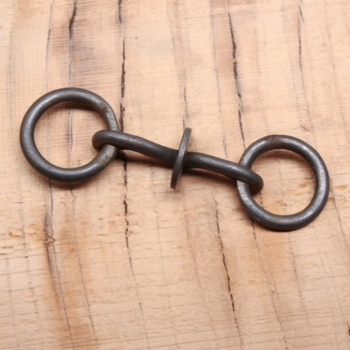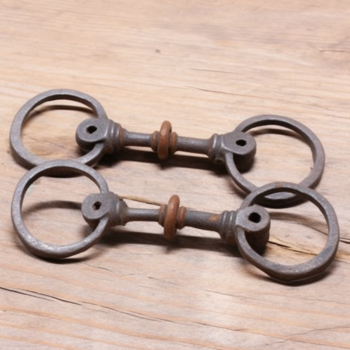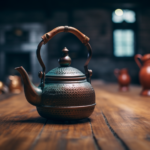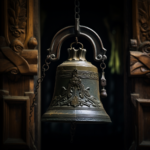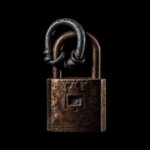A horse bit is a metal mouthpiece that is used along with a bridle to control and direct a horse. The bit gets inserted into the horse’s mouth and a part of it is connected to the reins. To be able to accurately go about with antique horse bit identification it is important to know a bit of history of the horse bits too. Understanding the role vintage horse bits played, it not only becomes easy to identify them but also to value them in the antique market.
History of Antique Horse Bits
Horse bits have been in use since ancient times, from the time people realized they needed a tool to control their horses. Ancient civilization saw the use of bone, rope, horn, or wood being used to make horse bits. Though these materials were sturdy for the bits, the rider found it difficult to control with them. This is when
It was around 1200 BC when the first metal horse bits were made, which included mostly bronze bits. Iron bits were made much later. Riders found handling and controlling metal horse bits easier and also more usable.
Horse bits during the Renaissance and Baroque periods had intricate designs and embellishments. But as time passed the bits became more handy and controllable rather than being ornated and fancy.
How to Accurately Spot a Real Antique Horse Bit
Collectors value antique horse bits not only for their real worth but also because they provide a glimpse into the rich history of equestrianism. But it’s very easy to get scammed by the many counterfeit pieces of horse bits that have flooded the market in recent years.
To ensure genuine antique horse bit identification, collectors and enthusiasts need to possess adequate knowledge and skills to be able to accurately spot the original piece. Let’s take a look at a few techniques that can be used for accurately identifying original horse bits.
Research and Learn
Before delving into the world of antique horse bits, it’s essential to equip yourself with adequate knowledge. Familiarize yourself with the various historical periods, styles, and regional variations in horse bit construction. You can refer to reference books, consulting experts, and even attend antique horse bit exhibitions. All three can help you develop a discerning eye.
Examine Construction and Materials
Authentic antique horse bits are typically handcrafted using high-quality materials like iron, copper, and brass. Carefully inspect the bit for signs of craftsmanship. Most of them have well-executed joinery and finely detailed designs. Genuine antique horse bits often bear the marks of individual smiths or manufacturers, which can further authenticate their origin.
Study Patina and Wear Patterns
Over time, authentic antique horse bits usually acquire a distinct patina and wear patterns that are challenging to replicate artificially. Genuine horse bits may exhibit signs of oxidation, natural aging, and wear consistent with historical usage.
Check Historical Documentation and Provenance
When purchasing antique horse bits, seek pieces that have been a part of appropriate historical documentation or provenance. A documented lineage tracing the bit’s ownership history provides valuable evidence of its authenticity. You can also look for accompanying records, such as photographs, letters, or certificates of authenticity. These factors can also lend credibility to the piece.
Seek Expert Advice/Appraisal
When in doubt, consult experts in the field of antique horse bits. Professional appraisers, museum curators, and seasoned collectors can offer valuable insights about specific styles, periods, and variations.
Compare and Contrast
Another effective method of distinguishing an authentic antique horse bit from a fake is by comparing it to authenticated examples. You can also visit reputable antique dealers, auction houses, or museums that have extensive collections of equestrian tools. By examining genuine pieces in person, you will develop a better understanding of the distinguishing features, craftsmanship, and unique characteristics of genuine antique horse bits.
Use of Traditional Techniques
Closely examine the construction methods employed in the creation of the horse bit. Genuine antique horse bits were often made using traditional techniques which included hand-forging, brazing, or riveting. If the piece you are examining has signs or welding or electroplating, it may be an indication of a fake.
Authenticate Certificates
Carefully review the document if the antique horse bit comes with a certificate of authenticity or appraisal. You need to make sure the certificate is genuine. Verify the expertise and reputation of the issuing authority. Also, research and cross-reference the information provided in the certificate with credible sources and experts in the field. Be cautious of certificates that seem generic or lack specific details about the item.
Beware of Unrealistic Pricing
If a deal seems too good to be true, exercise caution. Unrealistically low prices may be a red flag that the item is not an original or it has been misrepresented. Do not give in to sellers who pressure you to make a quick decision or who refuse to provide additional information or allow inspections. Verify the market value of similar authentic antique horse bits to gauge whether the price is reasonable.
Remember, antique horse bit identification can be a nuanced process. Accurately identifying original antique horse bits is a skill that requires time and patience. It comes with experience, knowledge, and diligent observation. Hone in on your understanding of historical styles, materials, and construction techniques to be able to distinguish an original from a fake.
Appraisal of Vintage Horse Bits
A professional appraisal process of vintage horse bits involves carefully evaluating and determining the value of these collectible items based on several factors.
To begin with, the appraiser examines the overall condition of the vintage horse bit, looking for any signs of damage, wear, or repairs. They also consider its original finish, noting any patina, rust, or discoloration that may have developed over time.
Next, the appraiser identifies the materials used in crafting the vintage horse bit. They try to check the kind of metal used, such as brass, steel, nickel, or silver. Appraisers assess the quality of these materials and check the horse bit for any unique markings, engravings, or decorative elements that could enhance its value.
The provenance or history of the antique horse bit is also important in the appraisal process. The appraiser may research the manufacturer or artisan responsible for creating the piece. They also check for any documentation that supports the authenticity and age of the antique horse bit.
The rarity and desirability of the vintage horse bit are crucial factors in determining its real value. Appraisers consider the current market demand for antique horse bits. They also look for any specific features or designs that make the piece more sought-after among collectors.
The appraiser then combines all these aspects to arrive at an estimated value for the vintage horse bit. This appraisal can be used for insurance purposes, sale or purchase negotiations, or simply to understand the collectible item’s worth in the market.
For an accurate appraisal, it is always recommended to consult a professional appraiser or expert who possesses knowledge about vintage equestrian items. Experts from Appraisily can easily help you.
